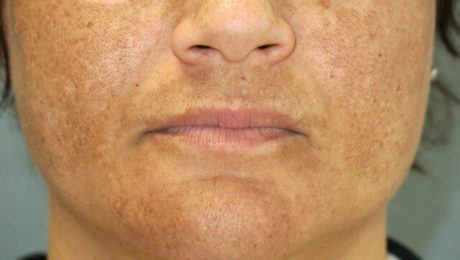The Potential Benefits of Stem Cells for Concussions – What You Need To Know (2021)
THURSDAY, 23 SEPTEMBER 2021 / PUBLISHED IN BLOG
Overview
Traumatic brain injuries (TBI), also known as concussions, are among the most frequent causes of death in the United States.
According to the Centers for Disease Control and Prevention (CDC), the number of emergency department visits related to TBI admissions, complications, and deaths increased by 53% in recent years.
People who can recover from TBI may experience irreversible neurological issues throughout their lives. As a result, they lose their autonomy and become reliant on other people to perform daily activities.
However, it’s not all doom and gloom. A few studies suggest that stem cell therapy could be beneficial in the management of TBI.
In this article, we’ll discuss everything you need to know about the potential effects of stem cell therapy in managing concussions.
How Can Stem Cells Help With Concussions?
For those unfamiliar with how stem cells function, here is a short description:
Stem cells can develop into any kind of tissue or cell, including those that don’t typically regenerate (e.g., heart cells, nerve cells). For instance, medical schools often teach that a person has the same number of neurons from the moment they are born to their death.
Although this assertion is not completely true due to the latest evidence that supports the ability of neurons to regenerate, the rate of regeneration is nowhere near enough to restore the damaged tissues caused by TBI or strokes.
To this end, researchers are using stem cells to create new neurons to help patients with TBI, multiple sclerosis, and other neurological disorders.
What is the Scientific Consensus on Stem Cell Therapy and Traumatic Brain Injuries?
Mesenchymal stem cells derived from the bone marrow, umbilical cord, or adipose tissues showed positive results in the management of concussions.
In a number of studies, the administration of stem cell therapy via the spinal cord showed real evidence of lesion improvement. Researchers used advanced imaging techniques such as functional MRI to objectify the changes.
Neuroscientists theorize that stem cells can replace the dead neurons, which helps with restoring some of the lost functions.
Today, hundreds of clinical trials are trying to unveil the full extent of how stem cell therapy helps with traumatic brain injuries.
Based on the available research, scientists advocate for the use of stem cell therapy in treating patients with severe concussions.
However, neuroscientists insist that stem cell therapy is only used in patients who failed to respond to conventional treatment methods.
Are You a Candidate for Stem Cell Therapy?
To see whether you are a candidate for stem cell therapy, contact us by clicking on this link. You will speak with one of our healthcare professionals in Cancun, México.

Takeaway Message
Stem cells have an amazing ability to divide into any type of tissue and potentially restore lost functions.
We hope that this article managed to highlight the potential role of stem cell therapy in addressing traumatic brain injury.
If you have any questions or concerns regarding stem cell therapy or TBI, please do not hesitate to share your thoughts in the comment section below.
- Published in Blog
What’s all the fuss about Regenerative Medicine?
Understanding Regenerative Medicine
Explore the concept of regenerative medicine and its role in healing various ailments using the body’s natural processes.
Benefits of Regenerative Medicine
Discover why patients are turning to regenerative medicine for non-invasive treatments with minimal side effects.
How Regenerative Medicine Works
Extraction and Application of Platelet-Rich Plasma (PRP)
Explain the process of obtaining PRP from a patient’s own blood or tissues and its application to promote healing.
Patient Experiences with Regenerative Medicine
Testimonials and Success Stories
Share real-life accounts of patients who have benefited from regenerative medicine treatments, highlighting their positive outcomes.
Future of Regenerative Medicine in Healthcare
Predictions and Trends
Discuss the potential growth and importance of regenerative medicine in future healthcare practices, likening its impact to groundbreaking medical advancements like penicillin.
Training and Implementation in Medical Practice
Integrating Regenerative Medicine
Explore how physicians are incorporating regenerative medicine into their practice through specialized training courses to enhance patient care.
Comparing Regenerative Medicine to Traditional Treatments

Advantages Over Conventional Medicine
Highlight the advantages of regenerative medicine over traditional medical approaches in terms of effectiveness and patient satisfaction.
Conclusion: Embracing Regenerative Medicine
Summarize the potential of regenerative medicine to revolutionize healthcare by offering effective, non-invasive treatments with fewer side effects.
References
Ensure comprehensive citations and references to support claims and information presented about regenerative medicine.
- Published in Blog
Platelet-Rich Plasma Stays Quietly Popular Despite Neglect
Introduction
FRIDAY, 27 APRIL 2018 / PUBLISHED IN BLOG
Fact: PRP Treatments in High Demand
According to research, PRP treatments are one of the most in-demand treatments available in healthcare. This is impressive considering the following:
- PRP is not supported by the medical industry. No big pharma funding on extensive research or marketing. No medical associations lobbying to increase its awareness.
- PRP is shunned by the insurance companies. No reimbursements from them. So getting patients to pay is difficult, especially for a treatment that’s relatively “unproven” like this.
- The cost of PRP treatments is actually rising. In 2006, you could get a PRP treatment for $450. Today it costs $800. The cheapest we’ve seen is $650. The prices are still robust as demand keeps up.
The Future Potential of PRP
We believe the best of PRP is not even here yet. We’re just one breakthrough study away from exploding into mainstream hospitals and clinics. We see the biggest growth in Platelet-Rich Plasma happening in Asia.
Strongly Based on Fundamental Healing Theory
The growth can be attributed to PRP’s fundamental healing property. More platelets. More growth factors and cytokines. And therefore more healing. It’s as simple as that. And no one can argue this fact.
Our body’s natural healing mechanism operates with 150,000/ul-350,000/ul platelets in blood. Using Platelet-Rich Plasma means this number is amplified by 3X to 5X. How can this not translate into better healing?
Believe it or not, the best orthopedic doctors use Platelet-Rich Plasma regularly.
PRP’s Applications and Effectiveness
PRP can be used to promote healing of injured tendons, ligaments, muscles, and joints and can be applied to various musculoskeletal problems. They conduct regular studies to test its effectiveness.
Key Study on PRP and Chronic Low Back Pain
One landmark study involved double-blind randomized controlled trials to see the effect of PRP on patients with chronic low back pain caused by torn discs. The study outcome says 60% of the patients felt significant improvements. Some were cured.
Different Variants of Platelet-Rich Plasma
So far, there are the following types of PRP variants:
- Plasma Rich in Growth Factors (PRGF)
- Plasma Rich in Platelets and Growth Factors (PRPGF)
- Platelet-Rich Plasma (PRP); Platelet Poor Plasma (PPP)
- Plasma Rich in Platelets and Rich in Leukocytes (LR-PRP)
- Plasma Rich in Platelets and Poor in Leukocytes (LP-PRP)
- Platelet-Rich Fibrin Matrix (PRFM)
All of them involve plasmapheresis — the two-stage centrifugation process to separate platelets from blood. However, what happens after that can be different. The industry hasn’t found its middle ground as to which variant to be standardized. We believe the confusion will clear up in 3-5 years.
Bio-Factors at Play in PRP
No matter which variant you end up using, the bio-factors at play are the following:
- Growth factors: TGF-B, PDGF, IGF-I, II, FGF, EGF, VEGF, ECGF
- Adhesive proteins: Fibrinogen, Fibronectin, Vitronectin, Thrombospondin-1
- Clotting & Anti-Clotting factors: Proteins, Antithrombin, Plasminogen, Proteases, Antiproteases
How Platelet-Rich Plasma Actually Works
Why is the treatment commonly used for wound healing and pain management? The answer is because the platelets’ main job is to aid coagulation, act as a biological glue, and support stem or primary cell migration. In addition, it also helps in restoring hyaluronic acid and accelerates the synthesis of collagen and glycosaminoglycans, increasing the cartilage matrix.
Not only that, the platelets are delivered in a clot, which means it can immediately act as a scaffold to enable the healing process. 95% of the bio-active proteins are released within 1 hour of injecting Platelet-Rich Plasma. The platelets continue to release growth factors for 7-10 days. Thus it’s recommended to re-inject PRP every 7 days.
Patient Perspective on PRP Costs
Why are patients coughing up their hard-earned money for this?
This reminds me of hundreds of thousands of PRP treatments paid from patients’ own pockets even though they’ve been paying for years to get covered by their respective insurance providers. In 2015, PRP costs were anywhere between $600 and $800 per site per treatment. And most patients go for repeated treatments. So why were they forking up their hard-earned money if the treatment was not working? Weren’t there any better alternatives under the “coverage” of their insurance provider? The answer is 1) the treatment works. 2) there’s nothing else out there that’s as natural and side-effect-free as PRP.
PRP and Osteoarthritis
Consider the case of osteoarthritis. 27 million Americans are impacted by it. 33.6% of people older than 65 are victims. All of them experience gradual degeneration of cartilage and bones — they lose roughly 5% of cartilage per year. Yet, our medical industry doesn’t have a fix to stop it.
However, when doctors started doing PRP treatments for their osteoarthritis patients, they found a large majority of them had no further cartilage loss. To me, it means we should make PRP treatments the default first-line treatment for osteoarthritis across the country.
PRP in Hair Loss and Cosmetic Applications
Another huge market is hair loss and cosmetic facial applications. I know there are many people who believe PRP doesn’t work for hair. Here’s what one of the Platelet-Rich Plasma studies found were the effect of the treatment on hair loss.
“Hair loss reduced and at 3 months it reached normal levels. Hair density reached a peak at 3 months (170.70 ± 37.81, P < 0.001). At 6 months and at 1 year, it was significantly increased, 156.25 ± 37.75 (P < 0.001) and 153.70 ± 39.92 (P < 0.001) respectively, comparing to baseline. Patients were satisfied with a mean result rating of 7.1 on a scale of 1-10. No remarkable adverse effects were noted.”
I’ll take that. That’s me getting PRP for hair.
PRP Market Growth
The PRP market is expected to hit $126 million in 2016. That number looks paltry. But that’s a 180% increase over the 2009 figure of $45 million.
Consider this. Just for osteoarthritis alone, if all the 27 million Americans receive 1 PRP shot a year at a conservative $400 per treatment, it would be a market of $10 billion. And that’s one condition out of the many that Platelet-Rich Plasma injections are proven to work.
PRP and Tennis Elbow
Another condition that PRP is known to work very well is Tennis Elbow. It affects on average 1% to 3% of the overall population. That number is as high as 50% among tennis players.
Insurance Coverage and PRP
Just getting Platelet-Rich Plasma covered by insurance will unleash the market big time and will help heal millions of patients naturally, more effectively.
Oh ya, that means the insurance companies will have to pay more. Why would they?
Potential Savings for Insurance Companies
HOWEVER, if this treatment could reduce further expensive intervention like surgery, then it may actually be a blessing for the insurance guys in terms of savings. One surgery avoided by a patient through the right intervention through PRP treatments will save the insurance companies at least $25,000. Now, that’s a win-win for both patients and insurance.
I believe it’s a matter of time before insurance companies start realizing their folly of not supporting this treatment.
PRP Still Considered “Unproven”
After all is said and done, it’s still “unproven.” The problem with PRP is that it can be used for just about everything, which is a good problem to have until healthcare officials (and insurance companies) start realizing that people are going to misuse it.
So it’s classified as unproven. The VAST scope of the treatment calls for urgent structure and guidelines. There are some 20+ conditions where researchers have found it “helps” in one way or another. It’s a daunting task to prove its efficiency in all the areas. Nevertheless, we’ll get there. Though we’ll need a lot of funding for that.
Need for Standardization
And yes, we need to standardize the procedure. As well as come up with optimized protocols for each condition. Someone needs to take initiative on that. We’re counting on independent doctors and medical institutions. The big pharma won’t jump in because what’s in it for them, right?
Simplicity and Accessibility of PRP
It’s so simple, you’d be an idiot not to try it. You only need a vacuum blood harvesting tube like what we offer here, a centrifuge with an adapter for the tube, pipettes, and 10ml ampules of 10% calcium chloride.
The only complexity comes from not following a standard PRP system. Because the final platelet count can depend on a variety of factors like the initial volume of blood, the technique used, and the relative concentration of WBC and/or RBC. As well as on the patient’s side, there are factors such as age.
- Published in Blog
The Growth Factor Showdown: Plasma Vs Fibrin
WEDNESDAY, 25 APRIL 2018 / PUBLISHED IN BLOG
Platelet-Rich Plasma (PRP) and Platelet-Rich Fibrin (PRF) have been the subject of numerous speculations regarding their efficacy in facilitating angiogenesis, hemostasis, osteogenesis, and bone growth. The primary reason these platelet products are effective is due to the growth factors they carry. Let’s delve into the specific roles of these growth factors in the healing process.
Growth Factors in Platelet-Rich Plasma
These growth factors play vital roles in PRP and contribute significantly to the healing process:
Platelet-Derived Growth Factor (PDGF)
Regulates cell growth and division, especially in blood vessels, making it crucial for blood vessel reproduction.
Transforming Growth Factor Beta (TGF-β)
Responsible for overall cell proliferation, differentiation, and various other cellular functions.
Fibroblast Growth Factor (FGF)
Plays a key role in wound healing and embryonic development, influencing the proliferation and differentiation of specialized cells and tissues.
Vascular Endothelial Growth Factor (VEGF)
Essential for vasculogenesis and angiogenesis, VEGF restores oxygen supply to cells when it is inadequate and helps create new blood vessels after injury.
Keratinocyte Growth Factor (KGF)
Found during the epithelialization phase of wound healing, KGF stimulates the formation of epithelium immediately after a wound or injury occurs.
Connective Tissue Growth Factor (CTGF)
Functions in cell adhesion, migration, proliferation, angiogenesis, skeletal development, and tissue wound repair.
Platelet-Rich Plasma Rules
A recent study suggests that PRP and its gelled cousin, PRF, differ significantly in the release of these growth factors, which can affect the healing outcome. The study concludes that:
PRP releases significantly higher proteins at earlier time points, which is beneficial for short-term effects.
PRF shows a continual and steady release of growth factors over a 10-day period, making it more beneficial for long-term healing.
Advantages of Platelet-Rich Fibrin Over Platelet-Rich Plasma
PRF has some notable advantages over PRP, including:
- It doesn’t require thrombin and anticoagulants.
- It results in better healing due to its slow polymerization process.
- It aids in hemostasis.
How Platelet-Rich Plasma Differs from Platelet-Rich Fibrin
Platelet-Rich Plasma is produced using a double spin method: a hard spin to separate red blood cells from everything else in the autologous blood, followed by a soft spin to separate the platelets and white blood cells, resulting in PRP, Platelet-Poor Plasma (PPP), and Red Blood Cells.
Platelet-Rich Fibrin is created using a newer method. After the first centrifugation, the middle layer is taken, containing fewer platelets but more clotting factors. This gradually forms into a fibrin network that traps cytokines and is then centrifuged again to result in PRF, a fibrin layer containing platelets and plasma.
What Matters in Healing
When it comes to accelerating healing, the immediate availability of growth factors and cytokines is crucial. PRP may be more effective in this regard due to its immediate release of growth factors, allowing for repeated injections for additional healing factors just days after the initial injection.
Conclusion
Platelet-derived products are still in their infancy. Despite their potential benefits, more research is needed to fully understand their capabilities. If you’re a physician using any or both of these products, we encourage you to share your experiences with us through our contact form.
- Published in Blog
Platelet-Rich Plasma For Melasma — Will It Fade Forever?
WEDNESDAY, 18 APRIL 2018 / PUBLISHED IN BLOG
For most women, a tiny pimple on the face is enough to ruin their day or week. Even the slightest imperfection that may have a 1% chance of getting noticed by others can be distressing. For these women, melasma is their darkest nightmare. It’s a common issue, often resulting from sun exposure, that causes brown patches on the face. Unfortunately, these patches are often permanent.
The Typical Journey of Melasma Sufferers
If you’re suffering from melasma, the road to “recovery” usually looks like this:
- Hope for Natural Fading: You hope that it’ll fade away on its own.
- Home Remedies: Your friend suggests you try apple cider vinegar and lemon juice treatment.
- Dermatologist Visit: Slightly disappointed, you visit a dermatologist who’ll prescribe a bleaching cream (hydroquinone or similar).
- Full-on Disappointment: The treatment doesn’t work as expected.
- Research: You Google the hell out of the topic and feel overwhelmed by the information.
- Concealers and Makeup: Concealers and makeup become your best friends to cover the patches.
At this point, no one can convince you there is a treatment for getting rid of melasma. Trying more and more treatments only runs the risk of making the condition worse. So, what would you do?
Platelet-Rich Plasma for Melasma
What is Platelet-Rich Plasma (PRP)?
According to recent Turkish and Malaysian studies, Platelet-Rich Plasma is showing great promise for melasma. One of the good things about PRP for melasma is that it won’t make the condition worse, unlike IPL, Fraxel, or other treatments. It’s like getting a natural facial treatment with a whole lot of potential benefits, even if it doesn’t help cure melasma.
How Does PRP Work for Melasma?
PRP injections work by supplying growth factors to reduce pigmentation. Being an independent treatment with no downtime, it can be done in conjunction with conventional treatments for melasma to add and enhance effects. PRP contains more than 30 bioactive substances that play roles like increasing skin volume and adding new blood vessels.
Platelet-Rich Plasma with Microneedling
Combining PRP with Microneedling
This is the most common combination for Platelet-Rich Plasma therapy. The combination has produced results for a variety of skin pigmentation issues, making it a valuable option for melasma, especially when creams and peels haven’t helped. More importantly, PRP’s ability to stimulate collagen production in the area tightens the pores and makes your skin glow.
Why Platelet-Rich Plasma?
The Science Behind PRP
PRP is primarily a healing vehicle. It needs to be injected into the membrane below the skin. It works by supplying the underlying skin membrane with collagen and tenascin stimulated by the transforming growth factors in PRP. These growth factors also promote the formation of new blood vessels, sometimes resulting in the disappearance of spider veins.
The released growth factors (mainly platelet-derived growth factor (PDGF), epidermal growth factor (EGF), vascular endothelial growth factor (VEGF), fibroblast growth factor (FGF), and transforming growth factor-beta (TGF-ß)) stimulate the proliferation of fibroblasts and epidermal cells, and collagen synthesis. Additionally, TGF-ß has been proven to inhibit melanogenesis — or reverse skin pigmentation — the exact opposite effect of exposure to UV-B radiation.
Treatment Results and Maintenance
Typically, patients see excellent results with 2-3 PRP injections in the first 3 months. Clinical studies have shown that the effects maintain after 6 months. However, melasma is known to recur even after successful treatments. Therefore, you must take precautions by using sunscreen with broad-spectrum protection and an SPF of 30 or higher. Avoiding harsh skincare products is also essential as they can exacerbate melasma.
By structuring the article with H2 headings and optimizing readability, this version should be more engaging for readers and better optimized for search engines.
- Published in Blog
How Foot and Ankle Surgeons Can Benefit From PRP
TUESDAY, 03 APRIL 2018 / PUBLISHED IN BLOG
Since it is a new science, many people are skeptical about Platelet-Rich Plasma, otherwise known as PRP. There are some studies out there that state that PRP works no better than a similarly administered placebo, but there are many other studies and doctors that claim that PRP works and works well. This also works well at a much lower cost and with fewer side effects than traditional medicine. One branch where the skepticism is loud and clear is podiatry, which deals with feet and ankles. Trying to combat this skepticism can help many surgeons to lower complication rates, improve patient satisfaction, and have better outcomes. For instance, here is a list of cases where PRP has been effective for the feet and ankles.
Plantar Fasciitis
PRP has become rather common as a treatment for Plantar Fasciitis, with many studies to prove the efficacy of this treatment. For instance, Dr. Daanial Kassicieh of Sarasota Neurology claims that PRP is one of the most effective treatments for this condition and that PRP can actually fully cure it. Many of his patients have avoided surgery just by utilizing PRP therapy. This is done with no downtime, no rehabilitation, and no side effects. This would explain why plantar fasciitis is the 5th most popular medical condition treated by PRP. This can be explained by the fact that over 3 million people are diagnosed with this condition and no other treatment really works for it besides, in fact, PRP.
Achilles Tendonitis
This is another condition that can be fairly hard to treat and gets worse over time unless healed. Many surgical approaches are often tricky and generally do not end up with good results. Because of this, the main treatment option is simply to give patients corticosteroids to reduce the pain, but really nothing else to treat the symptoms. However, there have been many studies done that have shown that PRP is a lot more effective, including those from the European Foot and Ankle Society. This means that PRP is a safer and more effective alternative than any other treatments available.
Diabetic Foot Ulcers
Diabetic foot ulcers can be troublesome, especially when they do not heal or heal properly. Over 2.5 million Americans with diabetes suffer from these ulcers. About 11% of these cases may need amputation of the affected limb. However, some studies have noted that just one injection of PRP and a topical solution bi-weekly started to heal the ulcers in just 8 weeks. Topical PRP has also been shown to work better than antiseptic creams as well.
Regenerating Bones
Bone regeneration is most commonly needed in the foot and ankle area. Although mechanical stabilization works best, the utilization of PRP has been surprising. PRP helps with healing bones and soft tissue at the damage site. According to a recent systematic review of 64 articles, the conclusion was to include more PRP therapy into the healing of foot and ankle bones. The science behind this is solid. For bone or tissue to form, three things are needed in the area:
- A scaffold for the growth to take place
- Biological stimulants to signal proteins
- Stem cells that provide bone-building potential
All three of these are crucial for bone formation. PRP can provide at least two of these, so there is no reason to ignore it when it comes to bone regeneration.
Ankle Sprains
This is an incredibly common condition and can be effectively treated by using PRP therapy. In one randomized controlled trial, researchers studied the effects of PRP injections on athletes with ankle sprains. This study showed that not only did PRP reduce the healing time by 20 days, but they also experienced much less pain. This can reduce the recovery period from 6 weeks to just about 2 or 3 weeks.
Immobilization is Vital
When it comes to foot and ankle-related injuries, one thing that really cannot be avoided is rest and rehabilitation. This is true regardless of whether PRP is administered. Because of this, many of the studies that show PRP to be ineffective often don’t use rest and rehabilitation, and that alone can be an issue. PRP is in no way a magic pill. All foot injuries need rest and rehabilitation in order to properly heal. With these two combined, it can drastically reduce healing times.
How Can Foot and Ankle Surgeons Benefit?
Using PRP in foot and ankle injuries is not going anywhere, so utilizing it would be the best way to go. Test it out with your patients, and try using platelet-rich plasma therapy instead of simply prescribing pills or doing costly surgeries. Your patients will thank you in the end.

- Published in Blog
A Guide To PRP Therapy
MONDAY, 19 MARCH 2018 / PUBLISHED IN BLOG
PRP (Platelet-Rich Plasma) therapy has revolutionized treatments in rheumatology, offering effective solutions for musculoskeletal conditions like joint issues and swelling. Here’s everything you need to know about integrating PRP into your practice.
Benefits of PRP Therapy in Rheumatology
PRP therapy is a game-changer in rheumatology, providing a non-invasive alternative to surgery with minimal risk and maximum efficacy. Despite initial skepticism, PRP has proven instrumental in alleviating symptoms and enhancing patient outcomes.
Factors Influencing PRP Treatment Success
Successful PRP treatments depend on several factors:
Platelet Concentration
Utilizing a quality PRP kit is essential for concentrating platelets 5-8 times above baseline levels. Adimarket offers reliable kits that optimize platelet concentration, crucial for treatment efficacy.
Role of White Blood Cells
PRP formulations with white blood cells can expedite healing by removing dead cells and bacteria. Variants like Red Blood Cells and Platelet Serum provide additional options based on treatment needs.
Anti-Coagulants and Buffers
Using anti-coagulants during PRP preparation prevents clotting but may increase blood acidity, affecting growth factors. Incorporating buffers before injection can mitigate acidity, preserving growth factor efficacy.
Clinical Evidence Supporting PRP
Numerous studies validate PRP’s effectiveness across various conditions:
- Subacromial Tendonitis: PRP significantly reduces the need for surgery compared to traditional treatments like bupivacaine and methylprednisolone.
- Epicondylitis: PRP shows substantial improvement rates, surpassing outcomes achieved with corticosteroid treatments.
- Plantar Fasciitis: PRP demonstrates superior outcomes over corticosteroids in long-term symptom relief.
- Knee Osteoarthritis: Systematic reviews highlight PRP’s superiority over hyaluronic acid in enhancing knee joint cartilage.
Integrating PRP Into Rheumatology Practice
Embracing PRP enhances patient care by offering a safe, effective, and economical treatment option. Early adoption allows rheumatologists to lead in innovative medical practices, benefiting millions of patients seeking alternatives to invasive procedures.
Conclusion: Embrace PRP for Enhanced Patient Care
PRP therapy is not just a passing trend but a transformative approach in rheumatology. With its proven track record and increasing popularity, incorporating PRP into your practice is a proactive step towards achieving superior patient outcomes.
By partnering with Adimarket for reliable PRP kits and equipment, rheumatologists can deliver cutting-edge care that meets the growing demand for safe and effective treatment options.
- Published in Blog









